 |
Meiler Lab Computational Chemical and Structural Biology |
Login
|
Teaching Resources
RESPONSIBLE CONDUCT IN RESEARCH
| Course Materials | |
|---|---|
| Lecture | Slides |
| Peer Review of Papers and Proposals How to Prepare an Constructive, Fair, Unbiased, Effective Review |
|
CHEM 337 - Computational Structural And Chemical Biology
Theoretical and practical aspects of protein sequence alignments,
secondary structure prediction, comparative modeling, protein-protein
and protein-ligand docking. Structure-based drug design, virtual
quantitative structure activity relations, cheminformatics, and
screening, pharmacophore mapping in therapeutic development.
This course includes a laboratory section.
Syllabus:
ORGANOCHEMICAL PATHWAYS
Michael Müller, Kerstin Gräbe, Jens Meiler
Organochemical Pathways is a systematic review on typical reactions in organic chemistry on a poster and as a program running on windows 95/98/NT
File and hi-resolution poster: pathways.zip 